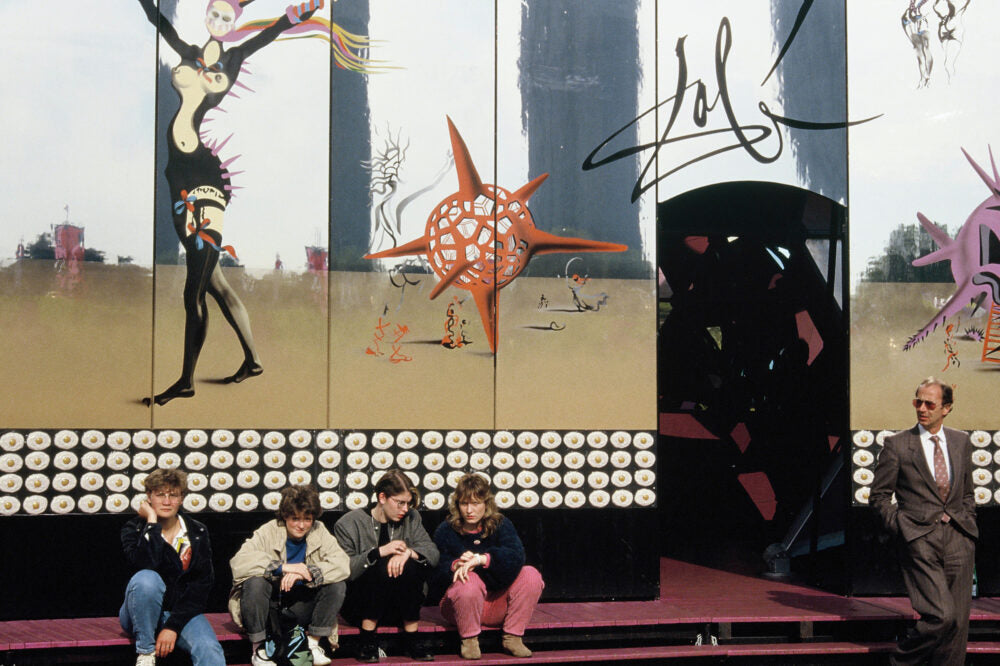For Luna Luna, Dalí created a geodesic surrealist funhouse dome with a mirrored interior.

Salvador Dalí, Façade for the Dalídom, exhibited 1987.

Fairground view: Salvador Dalí, Dalídom, Luna Luna, Hamburg, Germany, 1987.
Salvador Dalí is famous for his hallucinatory paintings that explore the human subconscious, creating compositions in which animals, humans, and objects become otherworldly landscapes. Following the success of Un Chien Andalou (1929), a film made in collaboration with Spanish filmmaker Luis Buñuel known for its highly-staged scenes of grotesque imagery—including a notorious scene in which a woman’s eye is cut with a razor—Dalí became a leading figure of the Surrealist movement. The artistic, intellectual, and literary movement led by poet and theorist André Breton was founded on eradicating the rules of modern society and rational thought by tapping into the unconscious mind, leading to irrational and expressive works influenced by dreams and hidden taboos.
Dalí was particularly inspired by Freud’s theories of the subconscious and its erotic importance, combining distorted figures and everyday objects to form magical new worlds. This pursuit of the symbolic “Surrealist object” is best illustrated in Dalí’s famous painting, The Persistence of Memory (1931), in which limp, melting pocket watches languish amidst a flat and expansive Catalonian landscape. Later on in life, Dalí also worked as a designer, envisioning stage sets, jewelry, and shop interiors during this period.
The inside of the dome features a mirrored, geodesic funhouse interior meant to induce spatial hallucinations.

Fairground view: Salvador Dalí, Dalídom, Luna Luna, Hamburg, Germany, 1987.

Salvador Dalí, Dalídom, Luna Luna, Hamburg, Germany, 1987.
The exterior of the dome that Dalí designed for Luna Luna features a group of trapeze dancers intermingled with spheres covered in spikes, hovering in a nighttime landscape evocative of his native Catalonia. The inside of the dome features a mirrored, geodesic funhouse interior meant to induce spatial hallucinations.
Dalí’s Luna Luna pavilion—named Dalídom—expands on his Dream of Venus surrealist funhouse designed for the 1939 New York World’s Fair. Dalídom pavilion incorporates a geodesic dome with a mirrored interior and song by Blue Chip Orchestra.















